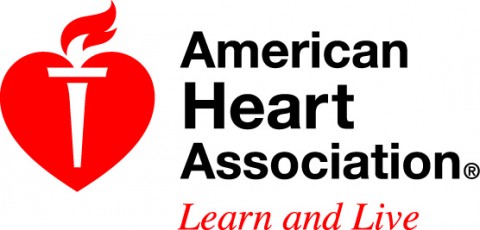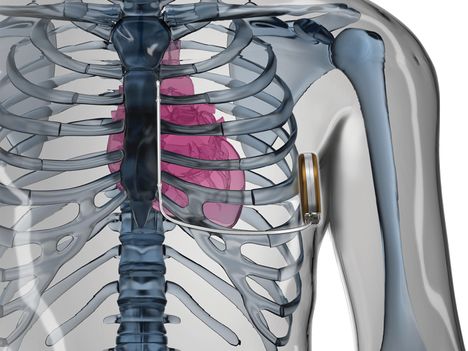 Dallas, TX – A new type of defibrillator implanted under the skin can detect dangerously abnormal heart rhythms and deliver shocks to restore a normal heartbeat without wires touching the heart, according to research in the American Heart Association journal, Circulation.
Dallas, TX – A new type of defibrillator implanted under the skin can detect dangerously abnormal heart rhythms and deliver shocks to restore a normal heartbeat without wires touching the heart, according to research in the American Heart Association journal, Circulation.
The subcutaneous implantable cardiac defibrillator (S-ICD®System) includes a lead placed under the skin along the left side of the breast bone. Traditional implantable cardiac defibrillators (ICDs) include electrical conducting wires inserted into blood vessels that touch the heart.
[youtube]http://www.youtube.com/watch?v=b19gnplaP8U[/youtube]
ICDs can greatly reduce the risk of death in patients at high risk for sudden cardiac arrest.Physicians insert the new device without X-ray guidance, and have reduced concerns about broken lead wires, vessel damage, vessel infection and scarring that make traditional device removal difficult.
“Defibrillation has repeatedly proven to be a great asset in prolonging the lives of cardiac patients, but there are still some risks to address,” said Martin C. Burke, D.O., senior author of the study and a professor of medicine and director of the Heart Rhythm Center at the University of Chicago. “This new system was developed over a dozen years to combine some of the best aspects of traditional implanted ICDs and external defibrillators.”
In the 33-site study, 314 of 330 patients (average age 52) evaluated had the S-ICD® System implanted. During an average 11-month follow-up, 21 patients spontaneously developed 38 episodes of ventricular fibrillation or ventricular tachycardia. All were successfully restored to a normal heart rhythm. In addition, 41 patients (13.1 percent) received shocks that were inappropriate because they weren’t preceded by a dangerous heart rhythm.

The study surpassed goals set by the U.S. Food and Drug Administration for evaluating the safety and effectiveness of the new device:
- Ninety-nine percent of the S-ICD® System patients remained free of complications 180 days following implantation, compared with a 79 percent goal.
- When tested by a purposely-induced abnormal rhythm following implantation, the S-ICD® System was 100 percent effective at consistently detecting and reversing ventricular fibrillation. The FDA goal is 88 percent.
The S-ICD® System has been available in Europe and New Zealand since 2009 and received FDA approval in the United States in 2012.
Participants in the study, along with new patients, will be followed to assess the performance of the new device over time.
“The S-ICD® System is not a replacement for other defibrillators,” Burke said. “For some patients it will be ideal, for others inappropriate, and the vast proportion in the middle will be able to select the type of system they want,” Burke said.
A comparison between a traditional ICD and the S-ICD® System is underway.
Co-authors are Raul Weiss, M.D.; Bradley P. Knight, M.D.; Michael R. Gold, M.D., Ph.D.; Angel R. Leon, M.D.; John M. Herre, M.D.; Margaret Hood, M.B., Ch.B.; Mayer Rashtian, M.D.; Mark Kremers, M.D.; Ian Crozier, M.B., Ch.B.; Kerry L. Lee, Ph.D.; and Warren Smith, M.D. Author disclosures are on the manuscript.
The study was funded by Cameron Health Inc. and then by Boston Scientific Corporation following its acquisition of Cameron Health Inc.
For the latest heart and stroke news, follow us on Twitter: @HeartNews.
For updates and new science in Circulation, follow @CircAHA.


